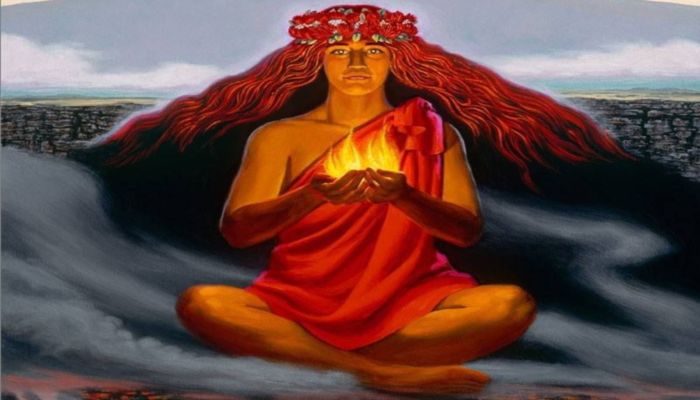
Hotspot Theory
How would you explain a series of volcanoes in the middle of the ocean such as the Hawaii, the Midway or the Canary islands?
J.T. Wilson, in 1963, suggested they are formed by relatively small, long-lasting, and exceptionally hot regions of magma located beneath the Earth crust, so-called “hotspots” (Wilson, 1963). Firstly, he applied this idea to the Hawaiian Islands, but the concept can be applied worldwide. The magma comes from deep pools of molten rocks which percolate through a series of fractures within the crust, towards the surface.
Eventually, the rising magma breaks the surface forming firstly seamounts, then volcanoes and finally even islands. The magma pool is stationary below the moving tectonic plate so when the crust slides away, old volcanoes move with it and shut down, while new ones build up above the hotspot (Fig. 1). The continuing rising of magma and tectonic plate movement generate an aligned chain of volcanoes which are consequently older following the direction of the moving plate (Fig.1).
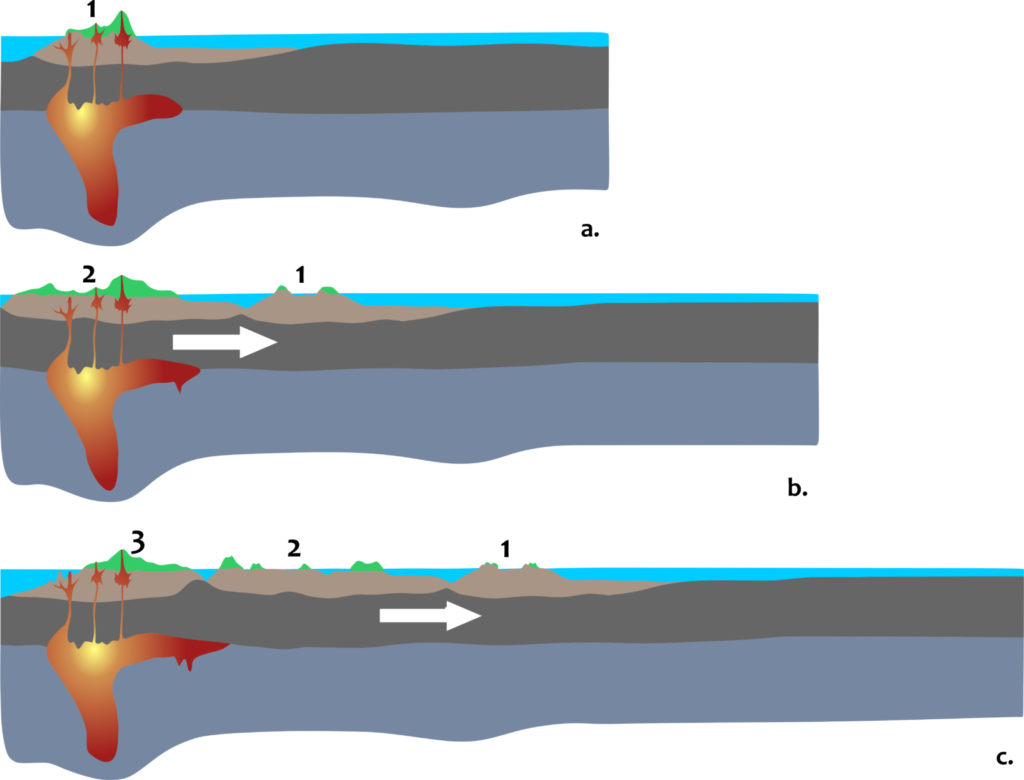
Fig. 1. Step-by-step evolution of a hotspot (a. to c.) showing the fixed magma pool and the moving crust. Islands becomes younger towards the left.
The most famous example of hotspots is surely the one of the Pacific Plate, which gave rise to the 6000 km long Emperor Seamounts Chain – Hawaiian Ridge (Fig.2a). In particular, the Hawaiian Ridge is composed of five main volcanic islands which rejuvenate towards the south (Fig.2b), where the Big Island (Hawaii Island) is still developing through several eruptions of the Mauna kea, Mauna Loa and most recently the Kilauea volcanoes (Fig.2c), the latter being ranked among the world’s most active volcanoes in the world (USGS summary).
However, Wilson was not the first in recognize that the Hawaii islands become younger moving southwards. Among the Hawaiians, an ancient myth is told, about the long journey of Pele (Vitaliano, 1973).

Fig. 2. a.) Overview of the Emperor Chain – Hawaiian Ridge ages (ages from Clouard and Bonneville, 2005); b.) Zoom on the main five Hawaii islands; c.) zoom on the Hawai’i Island showing the main volcano provinces. Maps from GeoMapApp (Ryan et al., 2009).
Pele, the Hawaiian Goddess of Fire and Volcanoes
Within Hawaiian mythology, Pele is the descendent of the Earth Mother and the Sky Father, both descendants of the supreme beings (Fig. 3). She is considered an akua: the sacred embodiment of a natural element, and she is also associated with the Hula dance, which, if dedicated to her, is modelled after lava flows (Nimmo, 1986).

Fig. 3. Paintings of Pele located in the Volcanoes National Park Visitor Centre. a.) from Ron Cogswell/Flickr; b.) by David Howard Hitchcock.
Despite being a Deity, Pele can appear to people as an ugly elder wanderer, accompanied by a white dog, who begs for food and drink. Those who are generous are rewarded, while those who are unkind are punished with their belongings destroyed by fire. In May 2018, during a violent eruption of the Kilauea, some Hawaiian residents still made offerings of flowers, trying to appease the goddess.
The mythical journey of Pele
There are plenty of folktales about Pele’s origins, and most of them depict Pele having a passionate, fiery, and jealous personality.
One of the most told versions narrates how Pele was born in Tahiti, an island of the French Polynesia, from which she was banished by her father because of her misbehaviour. Apparently, Pele had offended one of her sisters, Namakaokahai, the goddess of sea, by seducing her husband. Pele’s older brother Kamohoalii, the king of sharks, gave Pele a large canoe to sail away to the Hawaii islands, to avoid her sister’s wrath. Pele first landed on the Kauai island, the northernmost of the five islands, when she was ambushed by Namakaokahai who attacked Pele with tidal waves and left her to drown. However, Pele was able to recover and escape to Oahu, then to Molokai and to Maui islands. During her journey, Pele dug fire pits in each island she visited creating volcanoes through huge eruptions, such as the Diamond Head crater in Oahu and the Haleakala volcano in Maui. Her fire pits turned volcanoes allowed her angry sister to track her, eventually reaching Pele in Maui, for a final epic battle. Namakaokahai fought her sister by sending huge tidal waves and tsunami while Pele countered with fires pulled up out of the trembling earth, each spewing rivers of fiery lava into the ocean. Finally, Pele lost the battle and escaped to Hawaii island, where she dug her final pit at the Halemaumau Crater at the summit of the Kilauea, where it is believed she resides still today.
The incapacity to decisively win a battle but to always survive represents the role of Pele in keeping everything (Earth and Sea) in balance.
The truth behind the myth
Pele’s myth is correlated with the Polynesian archipelago since Polynesians are thought to have arrived in Hawaii around the 800 – 1000 CE (Masse and Tuggle, 1998; Hunt and Lipo, 2006). The Polynesians had no written language, but a rich oral tradition (Vansina, 1985) based on stories, chants, and dances (i.e., Hula) thus, the first clear geological record of the Kilauea eruptions goes back to the 1823 C.E., when Reverend William Ellis and three others became the first Europeans to visit Kīlauea’s summit (Swanson, 2008).
There are countless tales about Pele and her relatives, and many of them could tell of phenomena related to the Kilauea formation. Nowadays, by dating several eruptions, vulcanologists are correlating past eruptions with the Hawaiian oral traditions discovering a noteworthy correspondence (Swanson, 2008). In addition, volcanologists named three different types of solidified lava after Pele (Shimozuru, 1994; Clague et al., 2000): i) Pele’s hair, consisting of strands of stretched volcanic glass (Fig.4a); ii) Limu o Pele, consisting of thin sheets of brownish-colourless lava which resembles seaweed (Fig. 4b); iii) Pele’s tears, which are tiny pieces of solidified lava deformed into small tears like droplets (Fig. 4c).
The worldwide importance of Pele can be understood even in the frame of astronomy. On March 8, 1979, the presence of a large 300-km high volcanic plume was confirmed on Io (Fig. 4d), one of the Jupiter’s moons, and named after the Hawaiian goddess Pele (Morabito et al. 1979).
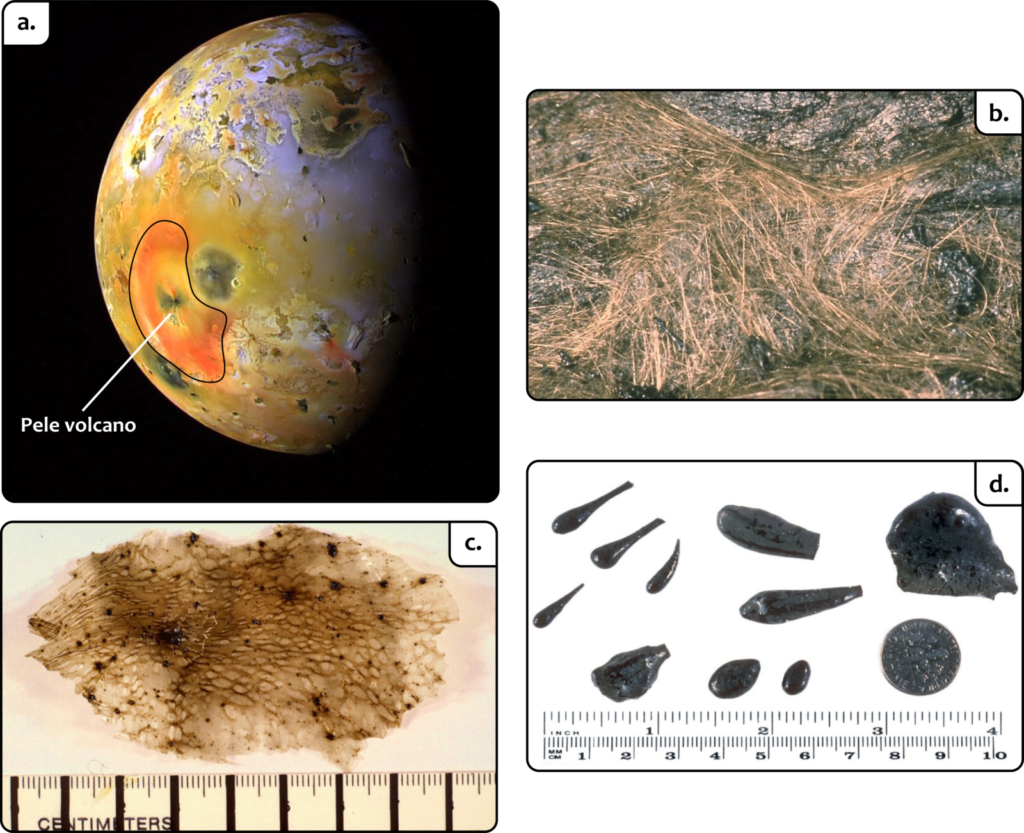
Fig. 4. a.) Pele volcano on Io Jupiter’s moon (NASA); b.) Pele’s Hair (USGS); c.) Limu o Pele (USGS); d.) Pele’s Tears (USGS).
References
Clague, D.A. et al., 2000. Lava bubble-wall fragments formed by submarine hydrovolcanic explosions on Lōʻihi Seamount and Kılauea Volcano. Bulletin of Volcanology 61, 437 – 449.
Clouard, V., & Boneville, A., 2005. Ages of seamounts, islands, and plateaus on the Pacific plate. In Foulger, G.R., Natland, J.H, Presnall, D.C. Anderson D.L. (Eds), Plates, plumes, and paradigms. Geological Society of America 388, doi: 10.1130/0-8137-2388-4.71.
Hunt, T.L. Hunt, C.P. Lipo, 2006. Late colonization of Easter Island. Science 311, 1603 – 606.
Masse, W.B., H.D. Tuggle, 1998. The date of Hawaiian colonization. In Stevenson, C.M., Lee, G., Morin, F.J. (Eds.), Easter Island in Pacific context south seas symposium. Proceedings of the Fourth International Conference on Easter Island and EastPolynesia, Eastern Island Foundation Occasional Paper 4, Easter Island Foundation. Bearsville and Cloud Mountain Presses, Los Osos, California, 229 – 235.
Morabito, L.A., S.P. Synnott, P.N. Kupfermann and S.A. Collins, 1979. Discovery of currently active extraterrestrial volcanism. Science 204, 4396 – 972.
Nimmo, H.A., 1986. Pele, Ancient Goddess of Contemporary Hawaii. Pacific Studies 9(2), 158 – 159.
Ryan, W. B. F., S.M. Carbotte, J. Coplan, S. O’Hara, A. Melkonian, R. Arko, R.A. Weissel, V. Ferrini, A. Goodwillie, F. Nitsche, J. Bonczkowski, and R. Zemsky (2009). Global Multi-Resolution Topography (GMRT) synthesis data set. Geochem. Geophys. Geosyst., 10, Q03014, doi:10.1029/2008GC002332, www.geomapapp.org/CC-BY.
Shimozuru, D., 1994. Physical parameters governing the formation of Pele’s hair and tears. Bulletin of Volcanology 56(3), 217 – 219. doi:10.1007/BF00279606.
Swanson, D.A., 2008. Hawaiian oral tradition describes 400 years of volcanic activity at Kīlauea. Journal of Volcanology and Geothermal Research 176, 427 – 431.
USGS Hawaiian Volcano Observatory. https://www.usgs.gov/volcanoes/kilauea. Consulted on 01/12/2021.
Vansina, J., 1985. Oral Tradition as History. The University of Wisconsin Press Madison, pp. 285.
Vitaliano, D.B., 1973. Geomythology: geological origins of myths and legends. In Piccardi, L. & Masse, W.B. (Eds), Myth and Geology. Geological Society, London, Special Publications 273, 1 – 7.
Wilson, T.J., 1963. A possible origin of the Hawaiian Islands. Canadian Journal of Physics 41, 863 – 870.

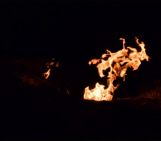

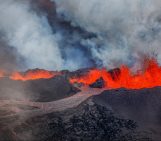
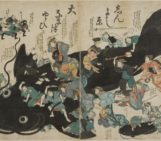
Dunyu Liu
This is a really nice blog. Enjoyed reading it. Thanks!
Filippo Carboni
Thank you very much! New posts are coming, hope you’ll find them nice as well.
George Weight
As a geography teacher some 20 to 40 years ago, we used the legend of Pele to illustrate how cultural traditions and scientific theory often run in parallel. I’m amazed that the ancient Hawaiians seemed to have an awareness that something was happening beneath the waters of the Pacific to account for the creation of their islands through volcanic activity–a phenomenon that we claim exclusivity to as “modern” in the development of plate tectonic and continental drift theories.
This site presents the concept that the ancients had more intelligence than we give them credit to possessing–a concept that could be extended to other ancient cultures as well.